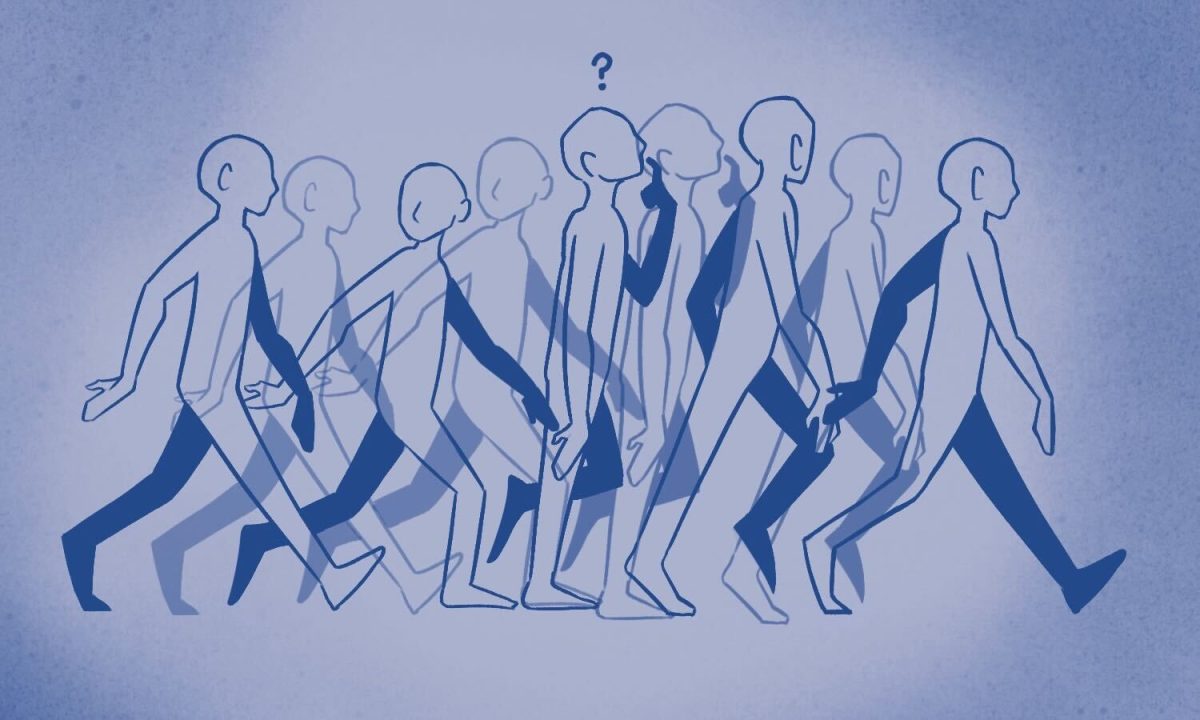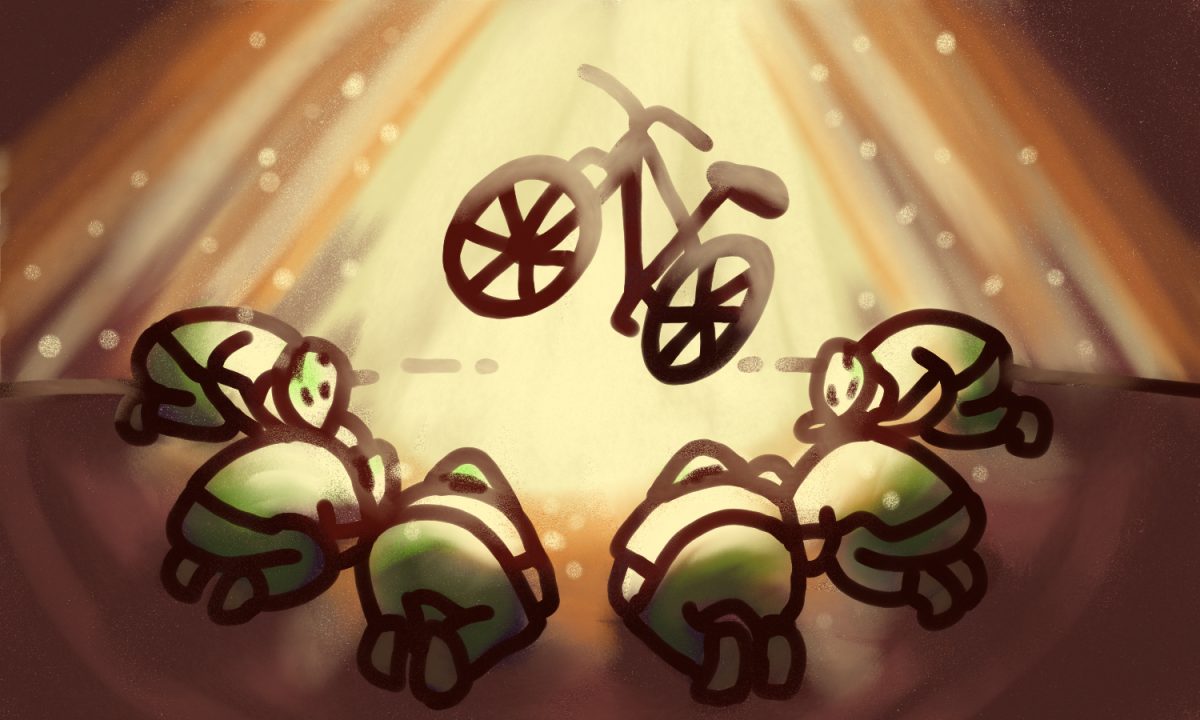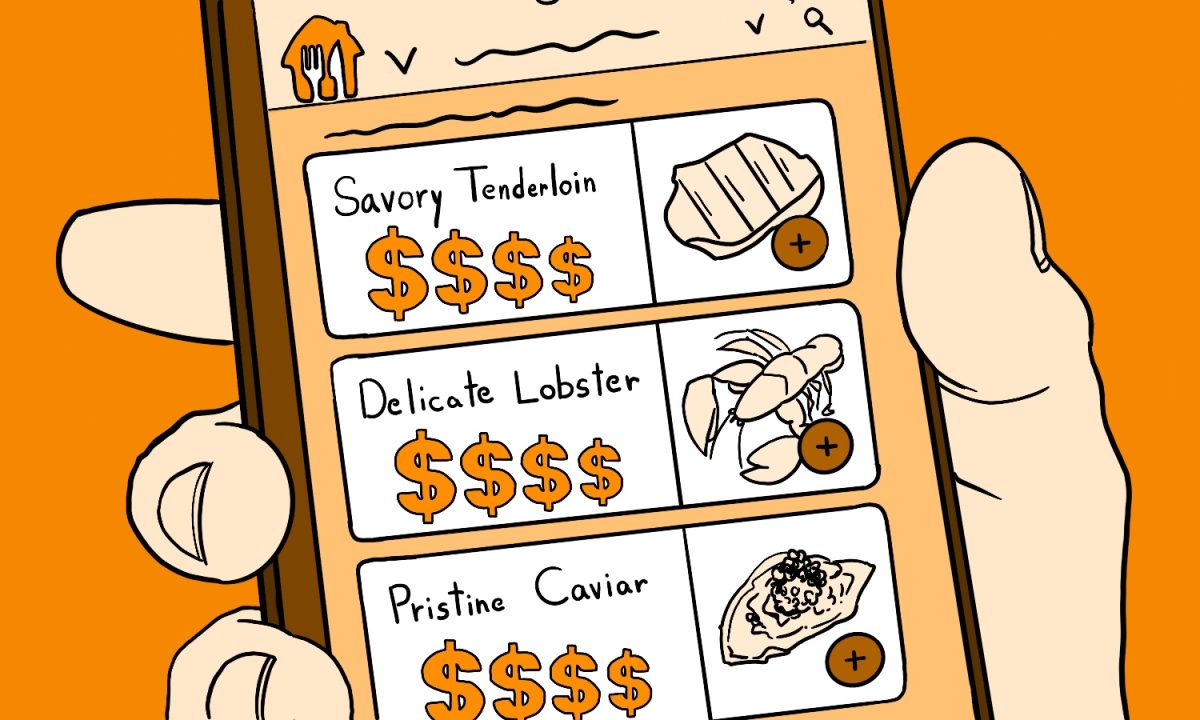Editor’s Note: All opinion section content reflects the views of the individual author only and does not represent a stance taken by The Collegian or its editorial board.
Like many microplastics in our ocean, glitter is causing irreparable harm. It may seem like tiny, pretty pieces of plastic can’t do very much damage, but therein lies the problem: Glitter is small. Glitter is often sold at sizes between 50-6,000 micrometers. That makes it a microplastic — or rather, polymers or plastic less than 5 millimeters in length.
These plastics can do a lot of damage to our environment. While bigger pieces like plastic grocery bags can choke or tangle sea animals, microplastics are sinister in a more subtle way. Most microplastic plastic makes its way to the ocean, where it can bioaccumulate in plankton, fish and even marine birds. It can get into an organism’s bloodstream, wreaking internal havoc by causing damage to cells.
A study by Dutch scientists from 2022 showed that around 80% of people that were tested had microplastics in their blood. Another study showed that microplastics can get into rain and fall down into what was previously thought to be pristine, untouched wilderness. So where does glitter play into all of this?
By definition, most glitter is already considered to be microplastic. The size of glitter varies, of course, but even the largest pieces are usually less than 1/4 inch. Glitter is already sold directly as a microplastic, and it is everywhere. From gift wrap to beauty products and from shoes to holiday decorations, every store you look in, you can probably find some product covered in the shiny bits of plastic.
Sure, glitter makes up only a tiny amount of microplastics worldwide. But its other impacts are just as — if not more — harmful than the plastic that breaks down into smaller pieces over time. Often, glitter makes it impossible for any items containing it to be recycled. Because it is plastic sold in its most destructive form, very little breaking down needs to be done, thus speeding up the timetable in which plastics can bioaccumulate and spread throughout the world.
So what can be done about this? Admittedly, for the glitter and microplastics already polluting our waters and wildlife, not much. Scientists have been making strides to try and remove or break down plastic waste for a long time with very little payoff. Some have proposed plastic-eating bacteria or enzymes, and while this may seem like a viable solution, it often runs into a lot of problems.
For one, plastic waste is often made up of multiple different types of plastics, and organisms that have been shown to be able to digest plastic are often only able to digest a specific type. Another concern is the cost, as it would be wildly expensive to try and synthesize a number of bacterium that could digest the amount of plastic waste that we have already.
Clearly, completely getting rid of already existing microplastic waste is out of the question with the science and resources we have now. However, halting production of some of our microplastic waste is not.
The glitter problem already has a solution: biodegradable alternatives. Biodegradable glitter is glitter that will break down into smaller harmless components in the environment. It is a sustainable alternative that provides the same function while still being environmentally friendly.
One problem with a lot of current industries is “green-washing,” a term that means a company might claim to have sustainable, environmentally friendly alternatives without actually having them. Such is the case for a number of biodegradable glitter brands. Some glitters with this label are biodegradable as long as they can be broken down through industrial processes.
Obviously, this is highly unlikely to happen with products like glitter.
One manufacturer, however, has managed to be able to produce truly environmentally friendly biodegradable glitter. Bioglitter makes cellulose-based glitter that is soluble in water and has been verified by third parties as truly biodegradable. Not only is this a true solution for environmentally friendly glitter, but hopefully the success of bio-glitter will be able to inspire others to follow in the path of environmentalism when it comes to microplastics.
Gray McCoy
Send letters to letters@collegian.com. When submitting letters, please abide by the guidelines listed at collegian.com.











